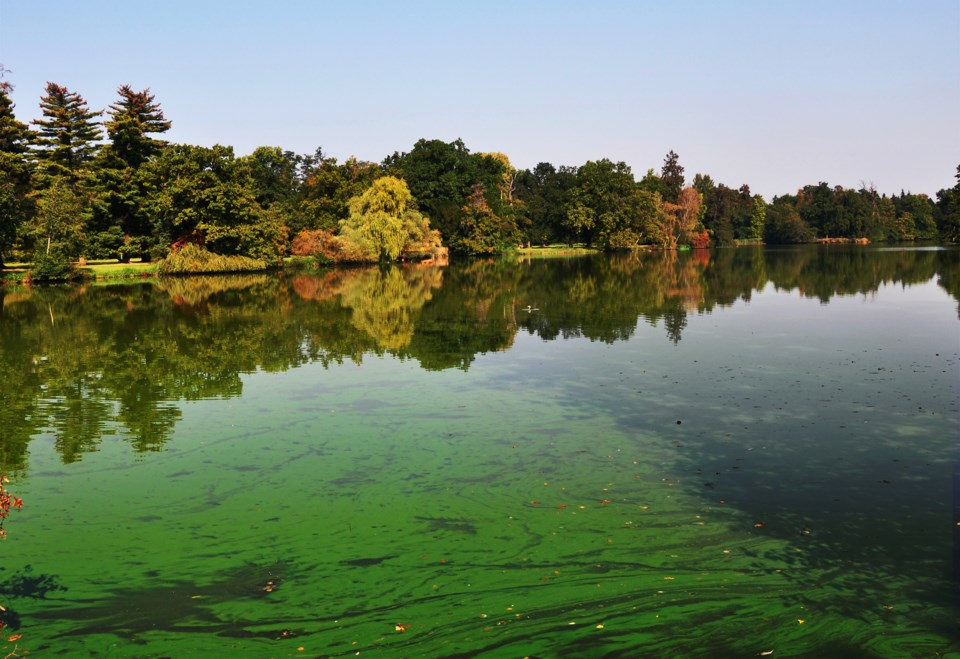NEWS RELEASE
GRAND RIVER CONSERVATION AUTHORITY
*************************
Hot August days are great for spending time outdoors, but also create the perfect conditions for algae to grow and bloom in large bodies of water like the Grand River Conservation Authority’s (GRCA) Belwood, Conestogo, Guelph, and Woolwich reservoirs.
Algae thrive on nutrients from fields and lawns that find their way into local waterways and reservoirs during heavy rainfall and spring melts and cause their populations to grow rapidly, forming blooms or scum on the surface of the water. Sometimes, these blooms contain cyanobacteria or blue-green algae. This algae can, but not always, produce a toxin that is harmful to people and pets if the water or algae are ingested.
When an algae bloom starts to grow, a noticeable green or brown scum will form on the surface of water bodies. Once blue-green algae are in full bloom, it may look like spilled ‘paint’ along the shoreline. A new blue-green algal bloom often smells like fresh cut grass, while an older bloom can smell like rotting garbage.
The presence of blue-green algae has been confirmed at Woolwich reservoir and a small bloom is suspected at Guelph Lake reservoir, based on observations made recently by GRCA staff. Signage has been posted at both of these locations notifying the public of the conditions.
Park visitors, recreational users and cottagers should be aware that when blue-green algae is visible, the following precautions should be taken:
- Keep children and pets away from the algae.
- Avoid contact with the algae.
- Don’t eat fish from the lake.
- Don’t use the water for drinking or any other purpose.
- Boating is allowed, where permitted, but boaters and recreational users should avoid touching the algae.
- Don’t swim in areas where you see scum or it is accumulating along the shoreline.
The Ministry of the Environment, Conservation and Parks, Region of Waterloo and the Wellington-Dufferin-Guelph Public Health units have been notified of the observations at these two locations.
For more information about blue-green algae:
- Visit the GRCA website to learn more about blue-green algae on GRCA reservoirs.
- Visit the Ministry of the Environment, Conservation and Parks website to learn more about blue-green algae.
*************************
